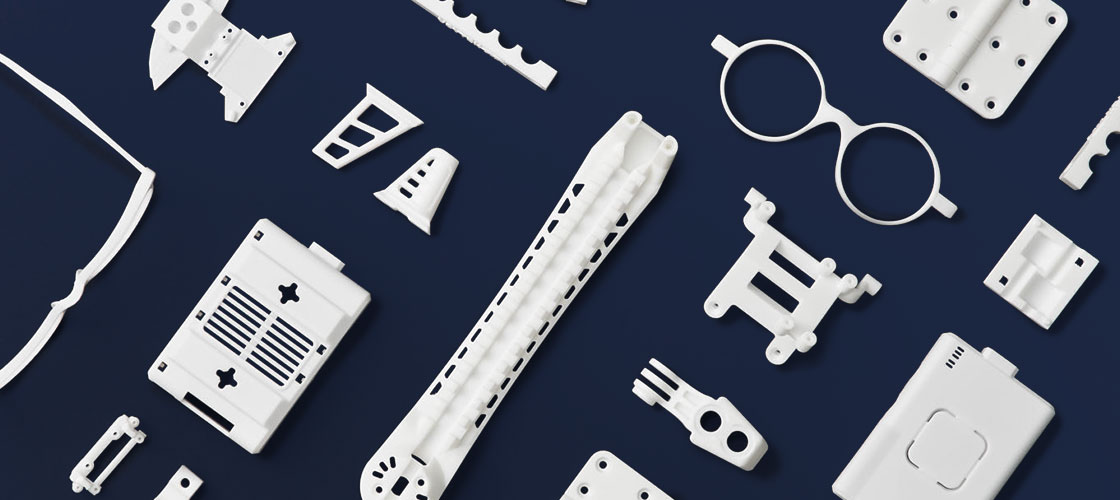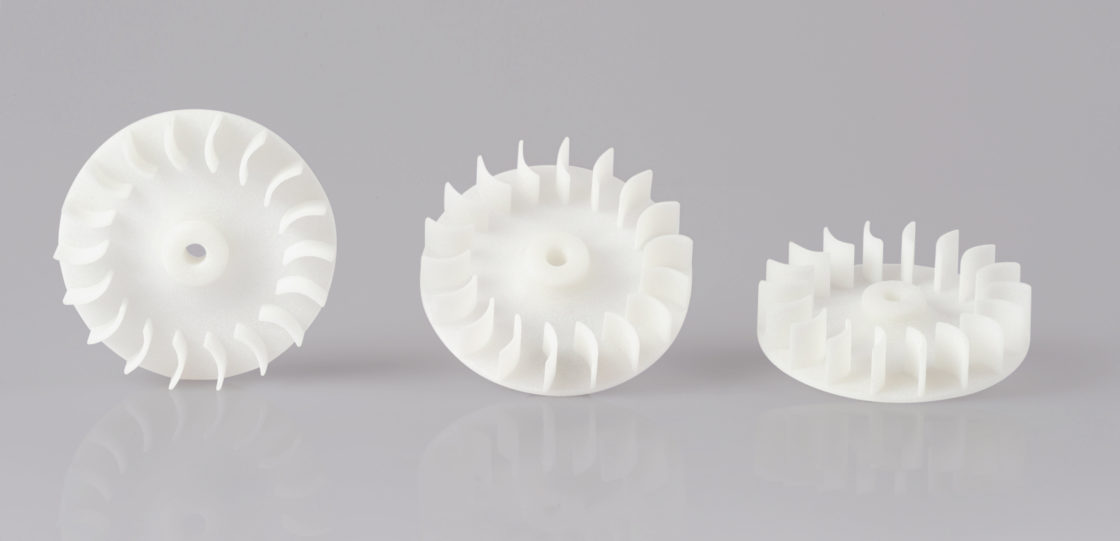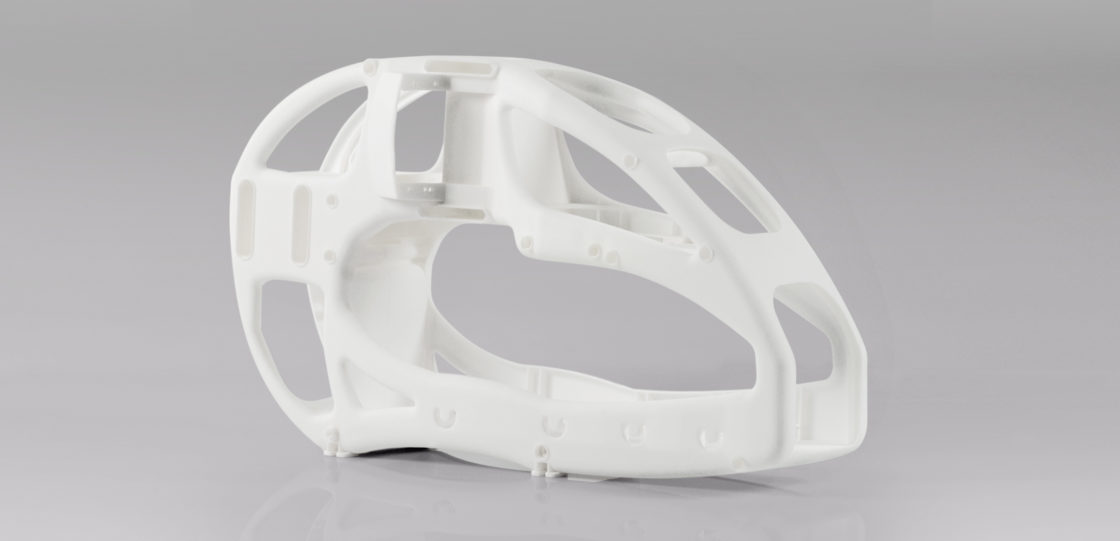
As industrial customers steadily begin to rely on additive manufacturing processes more for functional end-use parts, materials like PA11 used with Selective Laser Sintering (SLS) continue to have more impact. All the classic benefits apply: from reduced production time, to extreme opportunity for customization, and the ability to make complex geometries like never before.
Strength and durability are two key benefits of PA11 that make this material ideal for functional parts like gears and hinges. High ductility is a major benefit too, offering excellent impact resistance for parts in applications like automotive or aerospace, as well as other manufactured parts that must hold up to rigorous use like protection equipment for sports. PA11 is also well-suited for applications that require resistance to harsh weather conditions, especially heat.
Sustainable Origins: PA11 is Naturally Derived and Environmentally Friendly
Here’s an interesting fact about PA11 (also known as Nylon 11, EOS PA11, Nylon Polyamide 11), and one that many find surprising at first: it’s made from castor oil. The castor bean is actually an ingredient included in many different types of additives, from medical and skincare products to materials for industrial manufacturing.
In terms of 3D printing, the eco-friendly PA11 can also be recycled easily in manufacturing—often up to 70 percent. This leads to one of the other greatest benefits not only for PA11 but SLS 3D printing overall. As one of the oldest, and still one of the most powerful forms of additive manufacturing, SLS 3D printing relies on a laser to move back and forth over each layer as a structure is built, sintering the nylon PA11 powder to build a solid structure. Supports are not necessary as the extra unsintered powder acts as a bolstering mechanism, surrounding and stabilizing the part during printing. Afterward, the powder can be reused.
Indisputable Advantages: Strength in Material Properties

PA11 possesses a wide range of strong material characteristics, making it conducive to additive manufacturing. These include:
- Tensile Strength – Measured in terms of how much stress a part can take before it breaks, tensile strength is often used to compare materials in durability for 3D printing. Force is measured in megapascals (MPa), which are units of pressure. With a high tensile strength like 48 MPa, and significant toughness, PA11 is a good candidate for sturdy, functional parts, as well as prototypes that will hold up over time.
- High Elongation at Break – Also known as ‘fracture strain,’ elongation at break measures a part after it has been fractured, comparing the initial length of the part and then the same after it has strained and broken. The goal is to assess how resistant the material is to stress or being stretched, as well as its flexibility, calculating the strain to failure mark in percentages. High elongation at break is an impressive feature of PA11 at 45 percent, as materials are ultimately able to bend and stretch out of their natural state while under stress and then return to normal afterward. With higher elongation at break comes higher ductility and impact resistance too.
- Elasticity – Good elasticity also allows a material like PA11 to return to its original state after being stretched or bent. Technically, elastic qualities refer to the energy left in a material after it has been placed under stress—allowing it to snap back into place.
- Chemical Resistance – Superior resistance to chemicals like hydrocarbons, the primary elements of petroleum and natural gas, is a highly positive trait found in PA11 also—and often why this material is chosen for industrial applications. PA11 is also resistant to aldehydes, ketones, mineral bases, salts, alcohols, fuels, detergents, oils, and fats.
Exceptional Parts for Demanding Applications

While lending itself to extremely rigorous applications like automotive and aerospace, PA11 is biocompatible too, making it suitable for exterior medical applications, and especially those requiring not only the ability to hold up during long-term use but flexibility too. A good example would be 3D printed knee braces as well as other types of medical supports like prosthetics that offer progressive, patient-specific treatment due to the ability to customize devices, along with creating new ones quickly and affordably for patients like children who may continue to outgrow them.
Upload your 3D models now to get started with printing in PA11 using industrial SLS technology from Shapeways.


